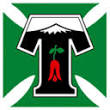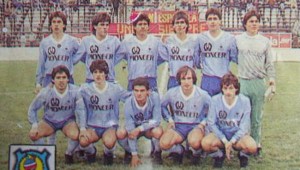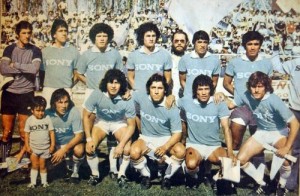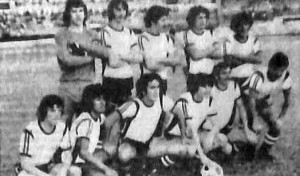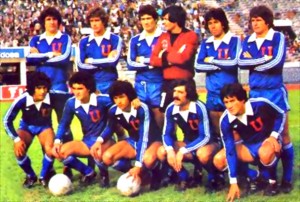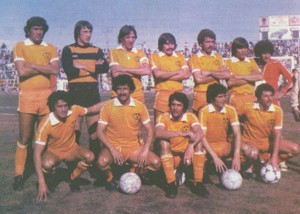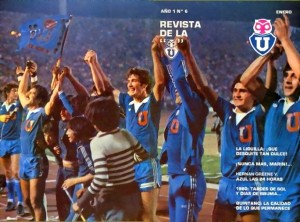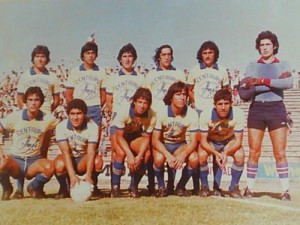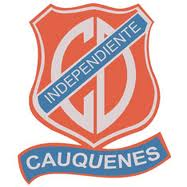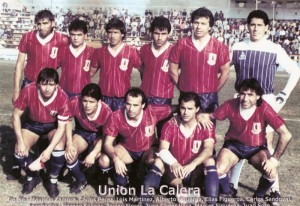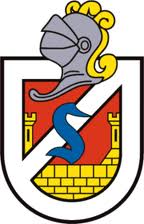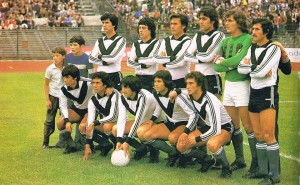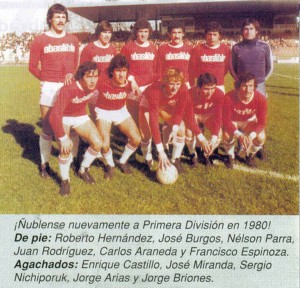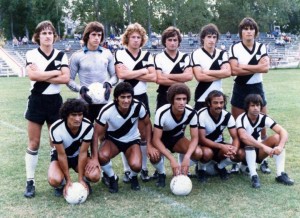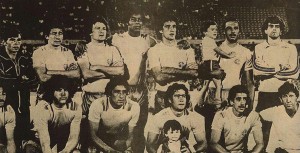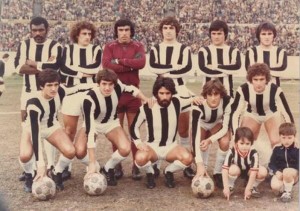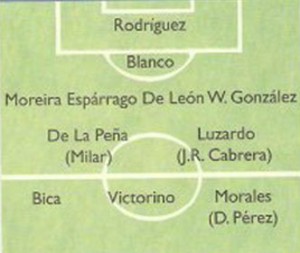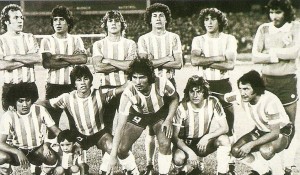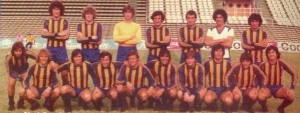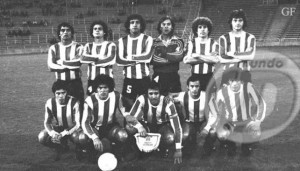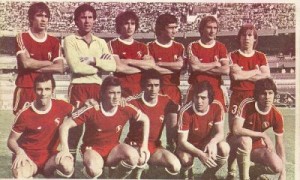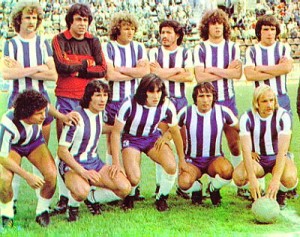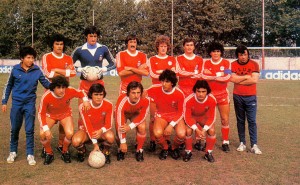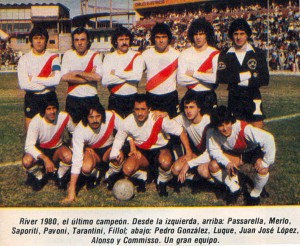Colombia with her own strangely twisted championship – two-phased, like in most of South America, but unlike almost any championship in the world. Torneo Apertura was played as normal league championship. The final table, however informed the second phase. The top two teams qualified to the final round. The rest, depending on their final standing in the Apertura moved to either Group A – the top 7 teams, or Group B – the bottom 7 teams, of Torneo Finalizacion. Deportivo (Cali) and Atletico Junior (Baranquilla) finished with equal points at the top – 35 each – and goal-difference decided the winner of Apertura:
 Atletico Junior bested Deportivo Cali with +20 goals vs +17. Both teams moved to the semi-final round of the championship, yet, still had to play Torneo Finalizacion. Goal difference was also the dividing point for 4 clubs in the middle of the table – 2 stayed among the top 7, Millonarios and America, and two moved to the lower placed teams in Group B – Atletico Nacional and Independiente Santa Fe.
Atletico Junior bested Deportivo Cali with +20 goals vs +17. Both teams moved to the semi-final round of the championship, yet, still had to play Torneo Finalizacion. Goal difference was also the dividing point for 4 clubs in the middle of the table – 2 stayed among the top 7, Millonarios and America, and two moved to the lower placed teams in Group B – Atletico Nacional and Independiente Santa Fe.
Torneo Finalizacion is a bit puzzling: every team played 21 matches – a number making no sense. Perhaps some results and points were carried from Apertura, but even that does not fit well. Anyhow, one thing was sure: that at least two teams of Group A had nothing to play for, since they already qualified to the next stage. And Atletico Junior did not play seriously – they finished last in Group A with 10 points, 4 less than the tema immediately above them. Deportivo Cali acted differently – they played seriously and finished first in the group. Once again goal-difference decided the first and second, but this time Deportivo prevailed – Millonarios had worse record. But Millonarios had nothing to worry about – they qualified to the semi-final round too.
Group B was not as easy as Group A.
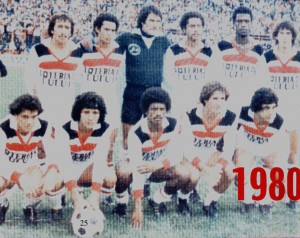 With 28 points Cucuta Deportivo won the group and moved to the semi-finals. The second spot had to be determined by extra play-off: Atletico Nacional and Deportes Tolima finished not only with equal points, but with the same goal-difference as well.
With 28 points Cucuta Deportivo won the group and moved to the semi-finals. The second spot had to be determined by extra play-off: Atletico Nacional and Deportes Tolima finished not only with equal points, but with the same goal-difference as well.
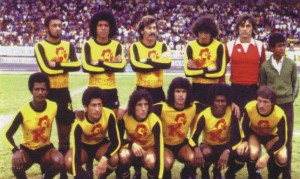 Deportes Tolima lost the first play-off match 0-4 and was unable to recover at the home leg – they won, but only 1-0 and Atletico Nacional went to the semi-finals.
Deportes Tolima lost the first play-off match 0-4 and was unable to recover at the home leg – they won, but only 1-0 and Atletico Nacional went to the semi-finals.
Eight teams divided again into 2 round-robin groups played the semi-finals. The top two teams of each group moved to the final tournament. A quick look at the participants… and one is puzzled. Atletico Junior and Deportivo Cali qualified from Torneo Apertura. Millonarios qualified from Group A of Torneo Finalizacion. Cucuta Deportivo and Atletico Nacional qualified from Group B of Torneo Finalizacion. That makes 5 teams… America (Cali) classified as well, but why? They finished 7th in the Apertura and 3rd in Group A of Finalizacion – unless they were allowed to go ahead because the winner of Group A was already qualified to play from the Apertura. The last 2 teams were Once Caldas and Deportivo Pereira. Why? They were 4th and 5th in Group A of Finalizacion. Third and 4th and the Apertura. At least looking at the final tables, that seems to be reason: they were the teams just below those leading both tournaments and getting qualification spots from either the one or the other championship. But if one is just below the best, the trend continues – Once Caldas and Deportivo Pereira finished 3rd and 4th in semi-final Group B. Normal round-robin was played, no points were carried from earlier stages, and after 6 games Atletico Junior and Atletico Nacional ended at the top of Group B, going to the final stage. Atletico Junior were curious winners of the group – they finished with negative goal-difference – 8-10. Champions, allowing more goals than they scored. On the other hand Once Caldas scored the most goals at this stage – 17. The next high scorers finished with 11, but unlike Once Caldas, they both qualified to the final.
No anomalies in Group A – America, having weak season so far, finally found their form and finished first. Deportivo Cali got the second qualification and Millonarios and Cucuta Deportivo were eliminated.
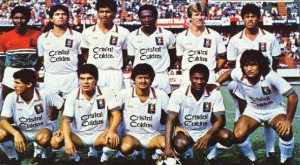 Once Caldas, the best scorers by far at the semi-finals, but unable to reach the final stage.
Once Caldas, the best scorers by far at the semi-finals, but unable to reach the final stage.
And the Final Quadrangle at last – again a round-robin group, every team playing twice against the rest, no points carried from earlier stages. The winner is the new Colombian champion and second placed team goes to Copa Libertadores as the second Colombian representative. No surprising heroics from the teams, which stayed in the shadows during the year: Atletico Nacional did not win a single match and finished last with 4 ties and 2 losses.
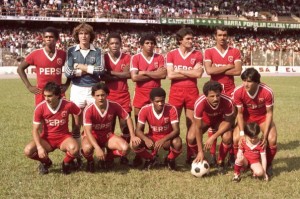 America (Cali) got bronze with 1 win, 2 ties, and 3 losses.
America (Cali) got bronze with 1 win, 2 ties, and 3 losses.
 Strong season for Deportivo Cali (Cali) – they finished 2nd with 2 wins, 3 ties, and 1 loss. Scored most goal in the final tournament, but also had leaky defense, so they were not exactly a contender – they were second best from start to finish this year. They got the second Colombian spot for Copa Libertadores, so, overall, it was excellent season.
Strong season for Deportivo Cali (Cali) – they finished 2nd with 2 wins, 3 ties, and 1 loss. Scored most goal in the final tournament, but also had leaky defense, so they were not exactly a contender – they were second best from start to finish this year. They got the second Colombian spot for Copa Libertadores, so, overall, it was excellent season.
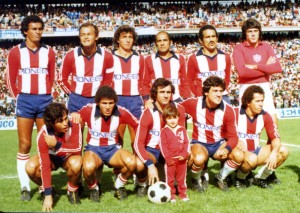 Standing from left: Dulio Miranda, Gabriel Berdugo, Omar Alfredo Galván, Jesús “Toto” Rubio, Rafael Reyes, Juan Carlos Angel Delménico.
Standing from left: Dulio Miranda, Gabriel Berdugo, Omar Alfredo Galván, Jesús “Toto” Rubio, Rafael Reyes, Juan Carlos Angel Delménico.
First row: Fernando Fiorillo, Oscar Bolaño, Juan Miguel Tutino, Miguel Angel Converti, Bonifacio Martínez.
Atletico Junior (Barranquilla) deservingly triumphed – perhaps their tactic helped: they slowed down at the beginning of Torneo Finalizacion. It was meaningless stage for them, since they already qualified to the semi-finals by winning Torneo Apertura, and very likely saved strength for the final effort. There they made no mistake. At the final, they did not lose at all – 3 wins and 3 ties. Los Tiburones (The Sharks) won their second title. This was a period when Argentine coaches were at the helm of the club, but the current one was the oldest and most famous:
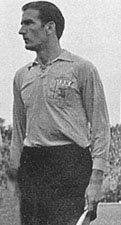 Jose Varacka coached Atletico Junior to their first title in 1977, and now, in his second spell, won again. He was yet to coach Atletico Junior in the 1980s – twice. As a general note, the club had the habit of hiring same coach again and again – Varacka was not exception: Brazilian coach Othon Dacunha coached Junior in 1969, 1982, and 2003; the great Uruguayan Luis Alberto Miloc – 1967-68, 1969-71, 1975; the Colombian Marcos Coll – 1973, 1975, 1981, 1982. So far, the record holds Julio Avelino Comesana – he coached Atletico Junior on six occasions (the latest was very short spell in the spring of 2014). But Varacka made them champions twice in his first spells.
Jose Varacka coached Atletico Junior to their first title in 1977, and now, in his second spell, won again. He was yet to coach Atletico Junior in the 1980s – twice. As a general note, the club had the habit of hiring same coach again and again – Varacka was not exception: Brazilian coach Othon Dacunha coached Junior in 1969, 1982, and 2003; the great Uruguayan Luis Alberto Miloc – 1967-68, 1969-71, 1975; the Colombian Marcos Coll – 1973, 1975, 1981, 1982. So far, the record holds Julio Avelino Comesana – he coached Atletico Junior on six occasions (the latest was very short spell in the spring of 2014). But Varacka made them champions twice in his first spells.
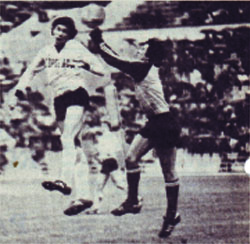
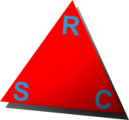

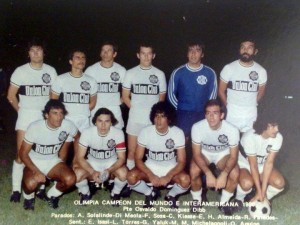
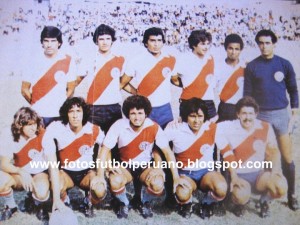


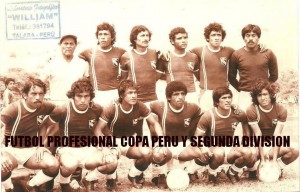

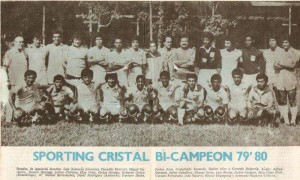

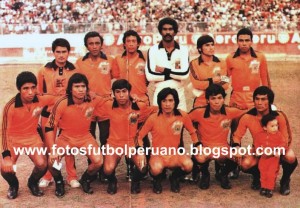
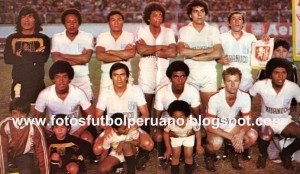
![028[1]](/wp-content/uploads/2016/02/0281-300x184.jpg)
